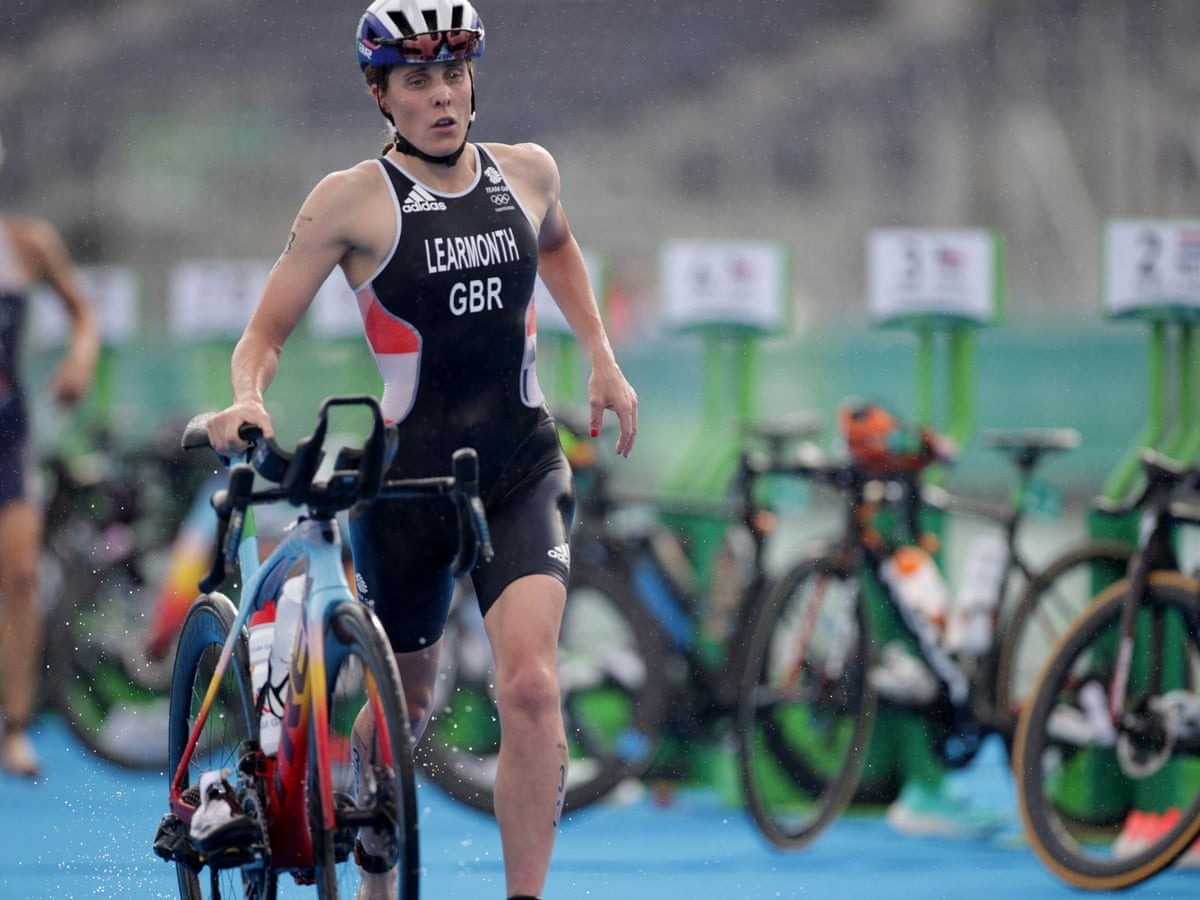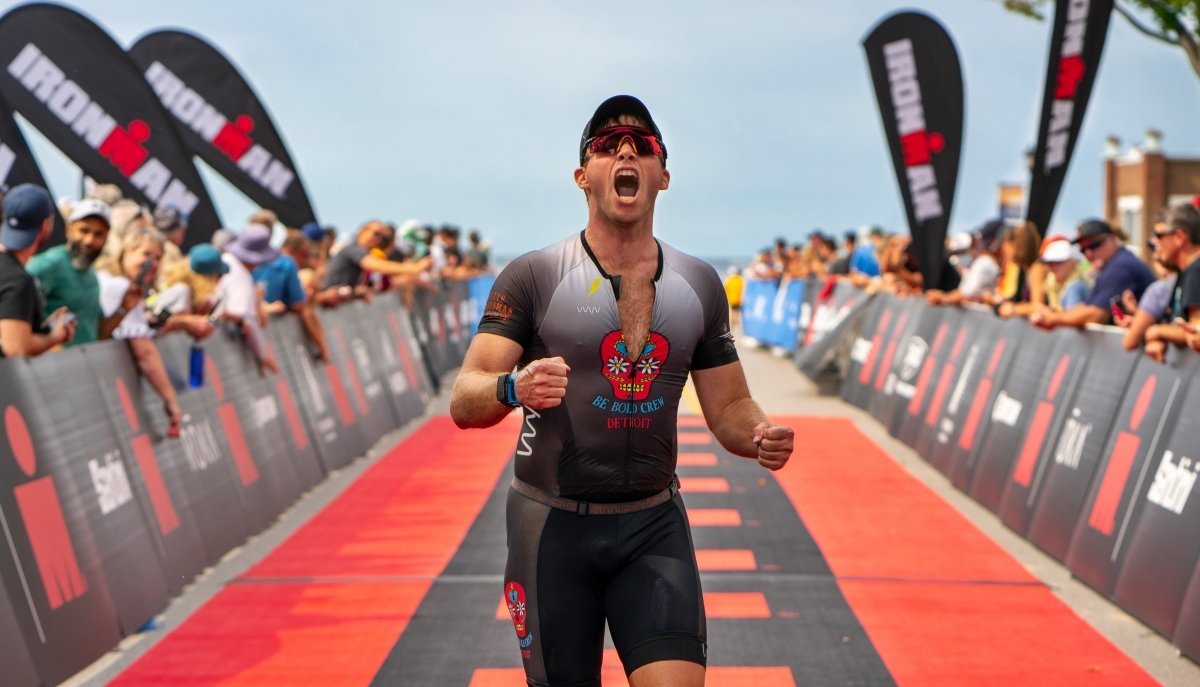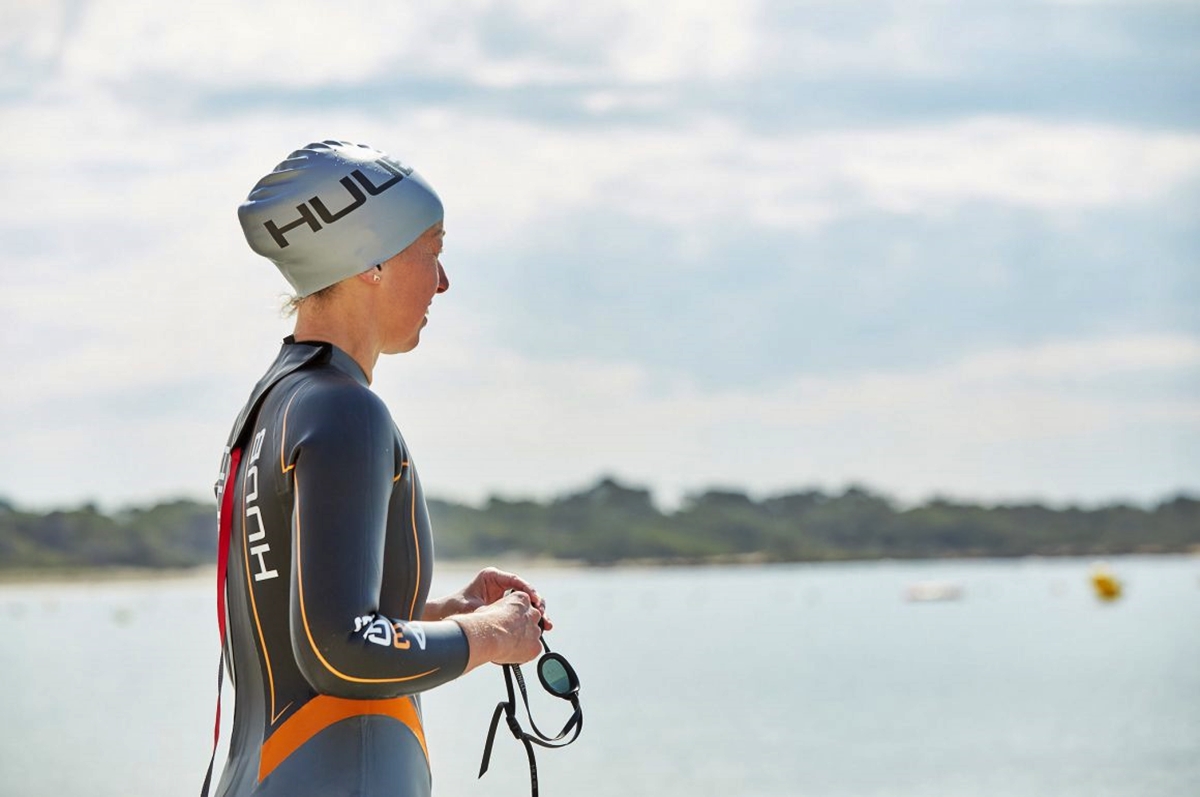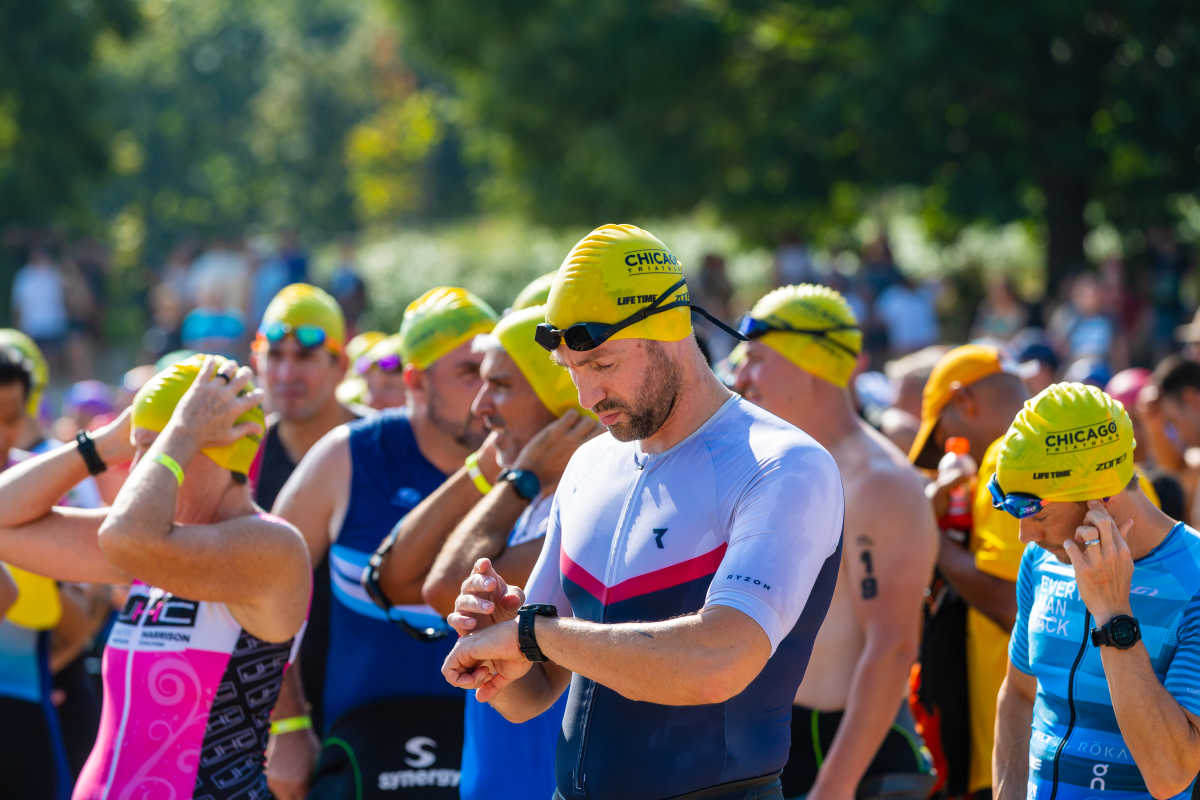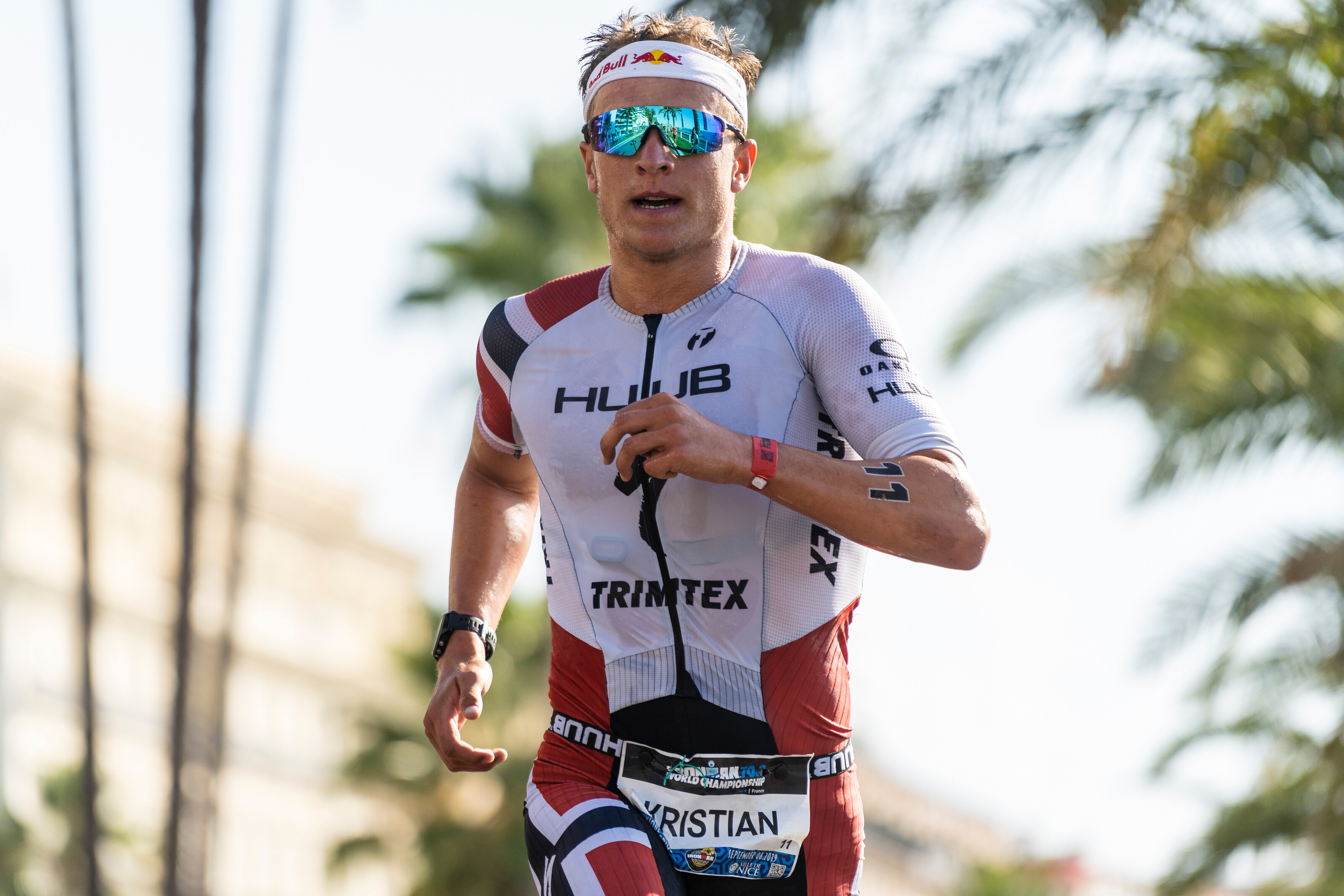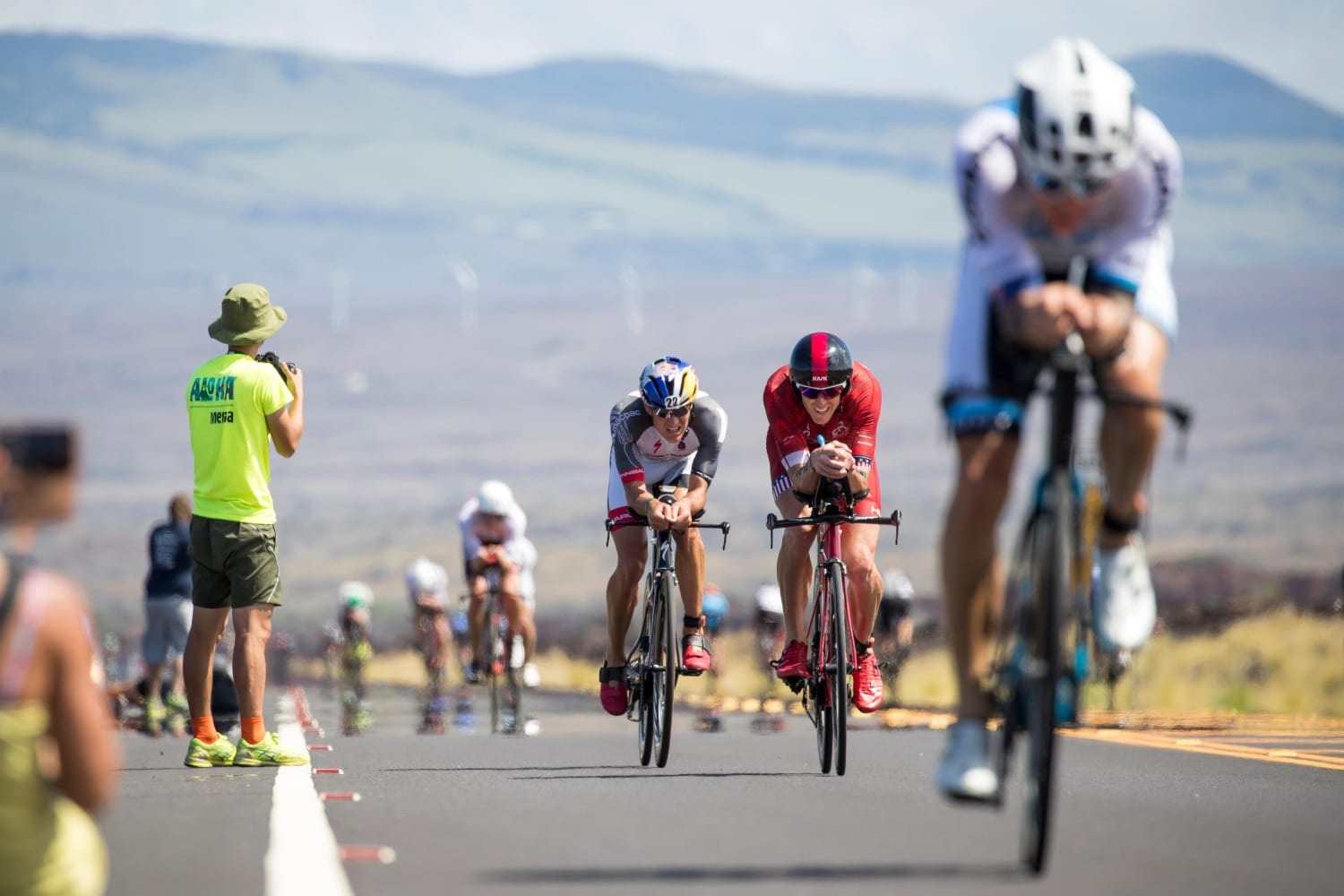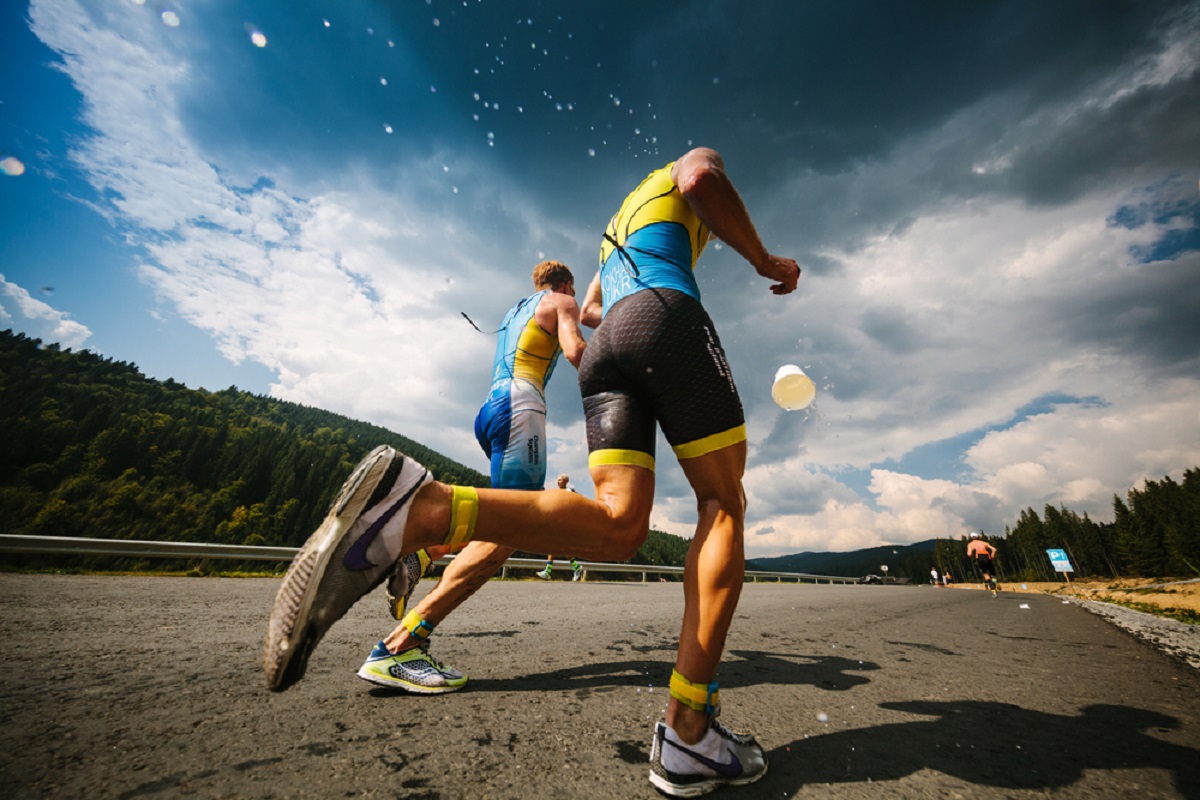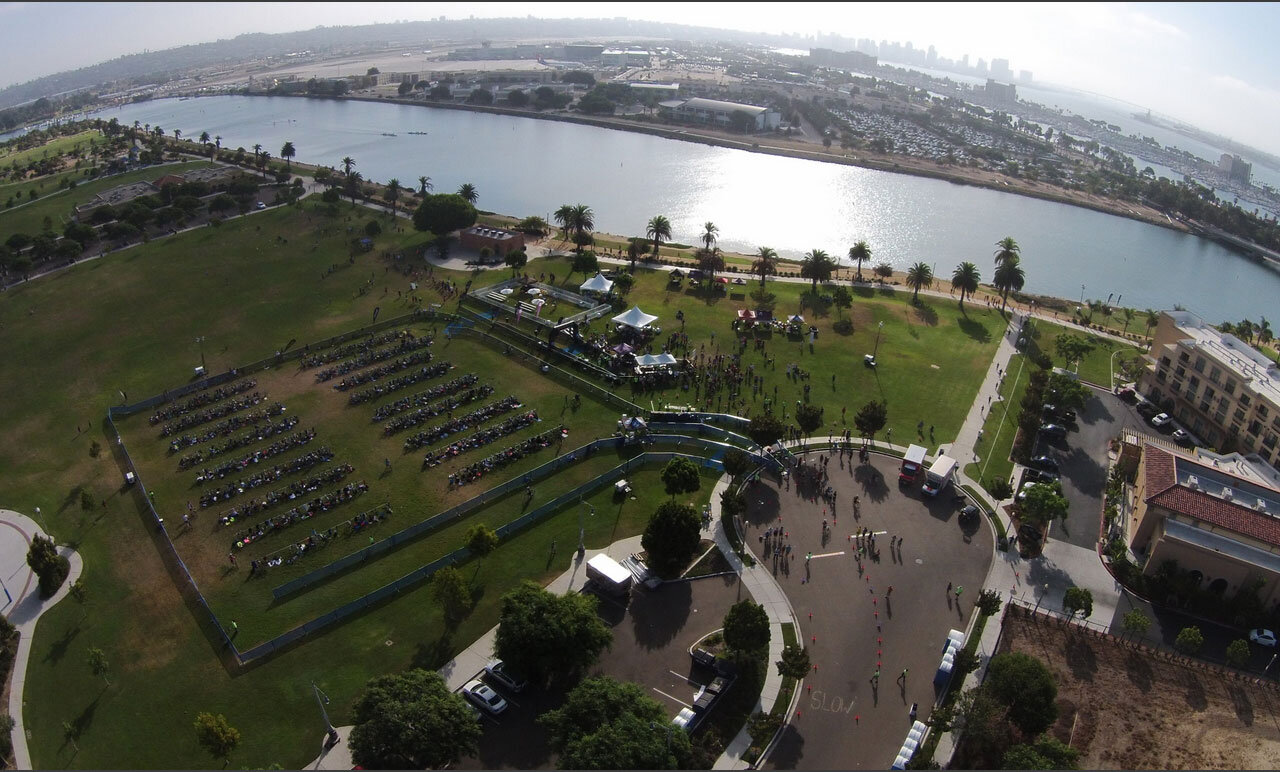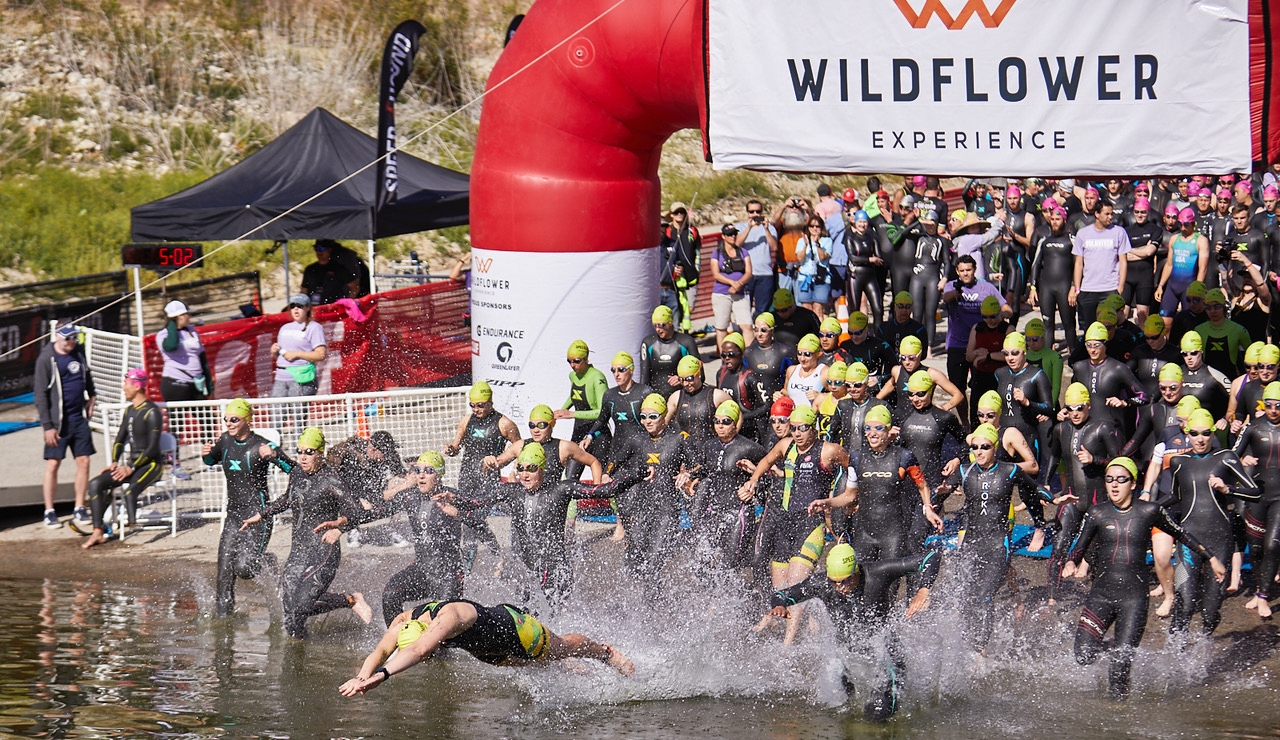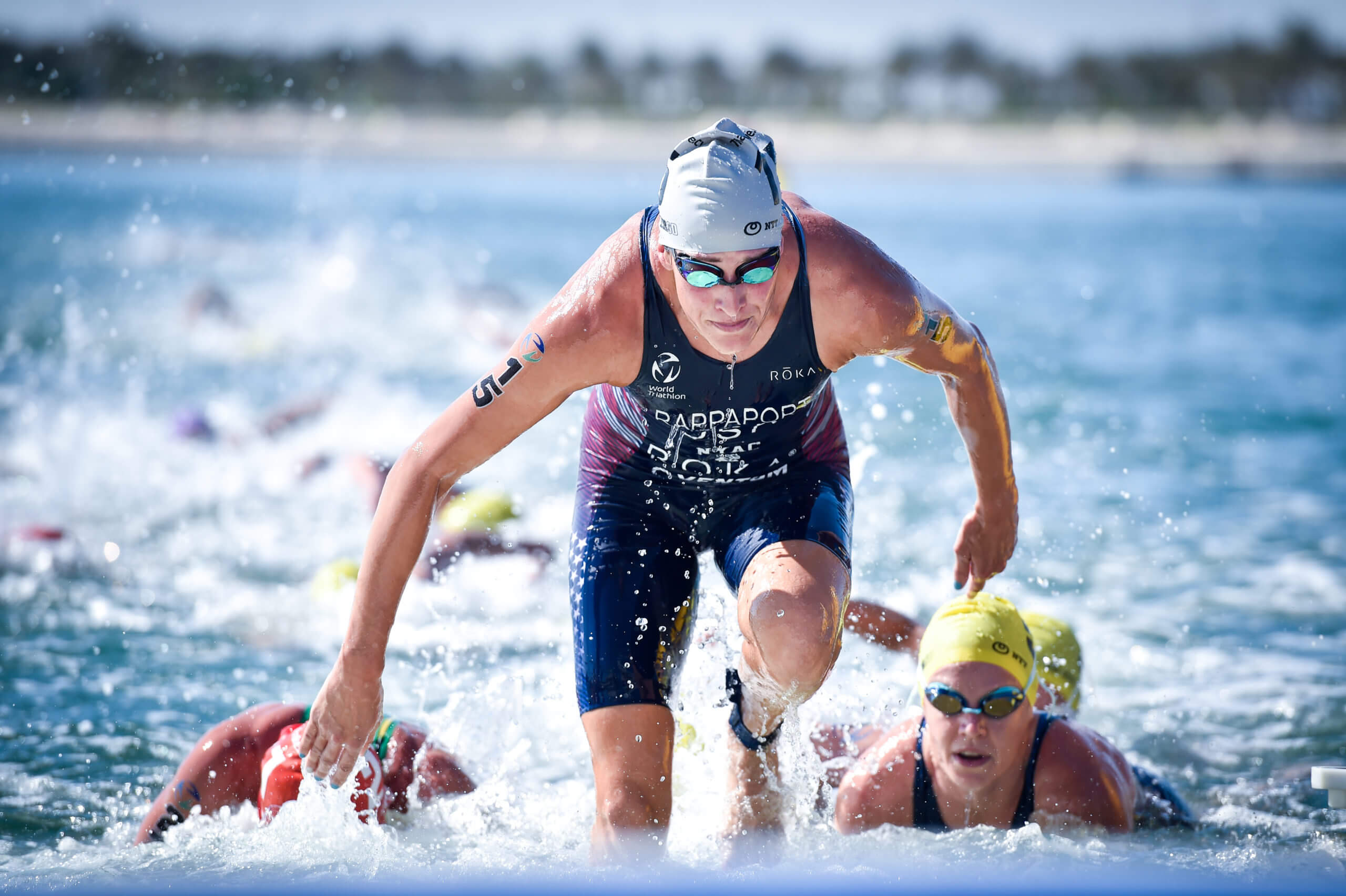

Featured
How Far Is A Triathlon In Miles
Modified: January 2, 2024
Discover the featured triathlon distance in miles and challenge yourself to go the extra mile in this ultimate endurance race.
Introduction
Triathlons are one of the most grueling and challenging endurance events that athletes can undertake. Combining swimming, cycling, and running, triathlons test the limits of physical and mental strength. Whether you are a seasoned triathlete or a newcomer to the world of multisport racing, understanding the distances involved is crucial for preparing and training for these demanding events.
In a triathlon, participants must complete three different legs: swimming, cycling, and running. Each leg presents a unique set of challenges and requires specific training and strategy. From sprint triathlons to Ironman races, the distances can vary significantly, making it important for athletes to know exactly what they are signing up for.
In this article, we will break down the distances typically covered in a triathlon, highlighting the swim, bike, and run segments, as well as the total distance covered. By the end, you will have a clear understanding of the miles you will conquer in a triathlon.
What is a Triathlon?
A triathlon is a multisport endurance event that consists of three consecutive disciplines: swimming, cycling, and running. It is a true test of physical and mental stamina, requiring athletes to excel in multiple disciplines. The origins of the modern triathlon can be traced back to the 1970s when it gained popularity as a way to settle debates among athletes from different sports about who was the fittest. Since then, the triathlon has grown into a prominent international sport.
The order of the disciplines in a triathlon is typically swim, bike, and run. This sequence allows participants to warm up their muscles with a swim, followed by the challenging bike leg, and ending with the demanding run to the finish line. There are different types of triathlons, including sprint, Olympic, half Ironman, and Ironman distances. Each distance presents its own unique challenges and requires varying levels of physical fitness and endurance.
Triathlons are organized events that draw athletes of all skill levels, from beginners looking to challenge themselves to seasoned professionals competing at the highest level. They offer a sense of camaraderie and achievement as participants push their limits and celebrate their accomplishments at the finish line.
Triathlons are not only physically demanding but also require mental strength and strategic planning. Athletes must pace themselves throughout each discipline to conserve energy and avoid burnout. Transitioning smoothly between disciplines is also crucial to save valuable time and maintain a competitive edge.
In recent years, the popularity of triathlons has grown significantly, with thousands of events taking place worldwide. Triathlons are not only a test of physical fitness but also a way to challenge oneself, set and achieve goals, and embrace a healthy and active lifestyle.
Swim Distance
The swim leg of a triathlon is the first discipline that participants tackle. It sets the tone for the entire race and can often be the most daunting for many athletes. The swim distance in a triathlon can vary depending on the race distance and location.
In a sprint triathlon, which is one of the shorter distance races, the swim distance is typically around 0.5 miles (800 meters). This distance allows beginners and those with less swimming experience to comfortably complete the swim leg while still challenging themselves.
In an Olympic distance triathlon, the swim distance increases to approximately 0.93 miles (1.5 kilometers). This longer swim requires a higher level of endurance and technical skills in the water.
For those taking on the half Ironman distance, the swim tends to be around 1.2 miles (1.9 kilometers). This is a significant step up from an Olympic distance triathlon and requires a solid swimming foundation and the ability to navigate open water conditions effectively.
The ultimate challenge for triathletes is the Ironman distance, which consists of a 2.4-mile (3.8-kilometer) swim. This grueling swim can take participants over an hour to complete, demanding a high level of physical and mental strength.
It’s important to note that swim distances may vary slightly depending on factors such as race location, weather conditions, and the particular course layout. Always check the official race information to confirm the swim distance for your specific triathlon.
Swimming in open water, as opposed to a pool, adds an extra layer of difficulty. Participants must contend with waves, currents, and a mass start with other swimmers. The ability to sight and navigate efficiently is critical to stay on course and avoid adding unnecessary distance.
Training for the swim leg of a triathlon involves building both endurance and technique. Incorporating regular swim sessions, focusing on drills, intervals, and open water practice, can help improve speed and efficiency in the water. Working with a swim coach or joining a Masters swim program can also provide valuable guidance and feedback.
Bike Distance
The bike leg of a triathlon is often considered the “meat” of the race. It is where athletes can make up time and gain a competitive advantage. The bike distance in a triathlon varies depending on the race distance and terrain.
In a sprint triathlon, the bike distance is typically around 12.4 miles (20 kilometers). This allows for a fast-paced race, where participants can push their limits and maintain a high intensity throughout.
In an Olympic distance triathlon, the bike leg is usually 24.9 miles (40 kilometers). This increased distance requires athletes to pace themselves and conserve energy while maintaining a strong average speed. It also allows for more strategic decision-making, such as when to push the pace or save energy for the upcoming run.
For those competing in a half Ironman, the bike distance jumps to 56 miles (90 kilometers). This longer distance demands a solid aerobic foundation and the ability to sustain a steady effort for an extended period. Athletes must also be prepared for different types of terrain, including climbs, descents, and flat stretches.
The ultimate challenge in triathlon is the Ironman distance, where the bike leg extends to 112 miles (180 kilometers). This grueling ride takes participants through diverse landscapes and can be a real test of mental fortitude and physical endurance. Proper pacing, nutrition, and bike handling skills are crucial to successfully completing this demanding distance.
It’s worth noting that the bike leg takes place on roads, which means participants must be mindful of traffic, follow the rules of the road, and prioritize safety. Training for the bike leg involves building both aerobic endurance and muscular strength. Long rides, hill repeats, and intervals are all essential components of bike training.
Having a well-maintained and properly fitted bike is also important for optimal performance and comfort during the race. Regular bike maintenance, including checking tire pressure, ensuring smooth gear shifts, and inspecting brakes, can help prevent mechanical issues during the event.
Understanding the bike distance in a triathlon is vital for training and race day preparation. By dedicating time and effort to improve your cycling skills and endurance, you can approach the bike leg with confidence and establish a strong foundation for the final run.
Run Distance
The run leg of a triathlon is the final test of the triathlete’s endurance and mental strength. After completing the swim and bike legs, participants must summon their last reserves of energy to conquer the run distance. The run distance in a triathlon varies depending on the race distance and course.
In a sprint triathlon, the run distance is typically around 3.1 miles (5 kilometers). This relatively shorter run allows athletes to push their pace and finish the race strong. It requires a combination of speed and endurance to maintain a quick tempo throughout.
In an Olympic distance triathlon, the run leg increases to approximately 6.2 miles (10 kilometers). Athletes must pace themselves and conserve energy from the previous disciplines to perform well on the run. Mental stamina becomes vital as fatigue sets in and participants aim to maintain a steady rhythm.
For those tackling a half Ironman distance, the run distance becomes a half marathon of 13.1 miles (21 kilometers). This challenging run requires significant endurance and mental fortitude to overcome the physical fatigue. Athletes must employ smart pacing strategies and stay mentally focused to finish strong.
The most grueling run leg is found in the Ironman distance, where participants complete a full marathon of 26.2 miles (42.2 kilometers). This final segment is a true test of raw determination and physical endurance. Athletes must dig deep to keep moving forward and maintain their mental resilience until they cross the finish line.
Training for the run leg of a triathlon involves building both aerobic endurance and speed. Incorporating regular running sessions, including long runs, tempo runs, and intervals, can help improve stamina and running efficiency. Strengthening exercises, such as hill repeats and strength training, can also enhance leg power and durability.
Proper nutrition and hydration are key during the run leg. Adequate fueling before, during, and after the race will help maintain energy levels and prevent muscle fatigue. It is important to practice nutrition strategies during training to determine what works best for your body and optimize race day performance.
The transition from the bike leg to the run leg, known as the T2 transition, requires careful planning and preparation. Practicing efficient transitions and having a strategy in place can save valuable time and ensure a smooth transition from the bike to the run.
Completing the run leg of a triathlon is both physically demanding and mentally rewarding. With proper training, preparation, and determination, you can conquer the run distance and achieve your triathlon goals. Embrace the challenge, embrace the miles, and enjoy the exhilaration of crossing the finish line!
Total Distance
The total distance of a triathlon is the sum of the swim, bike, and run distances. It is the ultimate challenge that athletes strive to conquer. The total distance varies depending on the race category, with each distance offering a unique level of difficulty and endurance.
In a sprint triathlon, the total distance typically ranges from 12 to 16 miles (19 to 26 kilometers). This shorter distance is a great starting point for beginners or those looking for a fast-paced, intense race experience. It requires a well-rounded combination of speed, endurance, and mental toughness.
The Olympic distance triathlon totals around 25 to 31 miles (40 to 50 kilometers). This distance is more challenging and demands greater endurance and pacing strategies. Athletes need to carefully manage their energy to perform well across all three disciplines.
For those aiming for the half Ironman distance, the total distance increases significantly, ranging from 70 to 75 miles (113 to 121 kilometers). This distance requires a high level of commitment and dedication to training. Athletes must be prepared for the long hours of swimming, cycling, and running to complete this endurance test.
The ultimate triathlon distance, the Ironman, totals approximately 140.6 miles (226.3 kilometers). This extraordinary feat pushes athletes to their limits both physically and mentally. The Ironman is renowned for being one of the most grueling endurance events in the world, requiring months of dedicated training to prepare.
It’s important to note that these distances can vary slightly depending on the race and its location. Some races may have variations in course layout or specific constraints that slightly alter the overall distance. Always consult the official race information to know the specific distances for the triathlon you are participating in.
Training for the total distance of a triathlon involves proper periodization, gradually increasing the volume and intensity of workouts to build endurance and strength. Balancing the three disciplines, along with rest and recovery, is crucial to avoid overtraining and reduce the risk of injury.
Successfully completing the total distance of a triathlon is a monumental achievement that requires dedication, perseverance, and mental fortitude. It’s not just about the physical components but also about the mental strength to push through the challenges and keep going when your body is fatigued.
Triathlons provide an incredible opportunity for personal growth, self-discovery, and the chance to challenge yourself like never before. Embrace the total distance as a testament to your resilience and determination, and relish the sense of accomplishment as you cross the finish line.
Conclusion
Triathlons are remarkable events that test the physical and mental limits of athletes. From the swim leg to the bike leg, culminating in the run, triathlons demand focus, endurance, and unwavering determination. Understanding the distances involved in a triathlon is crucial for effective training and race day preparation.
Swim distances can range from 0.5 miles to 2.4 miles depending on the race category, while bike distances can vary from 12.4 miles to 112 miles. The run leg completes the triathlon, with distances ranging from 3.1 miles to a full marathon of 26.2 miles.
When added together, the total distance of a triathlon captures the grandeur of the event, spanning from a sprint distance of roughly 12 miles to an Ironman distance of approximately 140 miles. Completing a triathlon, regardless of the distance, is an incredible achievement that showcases an individual’s dedication, perseverance, and commitment to personal growth and physical fitness.
Preparing for a triathlon necessitates a comprehensive training plan encompassing all three disciplines. It involves building endurance, refining technique, and mastering transitions. Adhering to a well-structured training program and seeking guidance from experienced coaches can greatly enhance performance and reduce the risk of injury.
Triathlons offer an opportunity to push personal boundaries, challenge ourselves, and embrace a vibrant and healthy lifestyle. They foster camaraderie among athletes of all abilities, creating a supportive community that encourages growth and celebrates achievements.
As you embark on your triathlon journey, remember that success is not solely defined by finishing time but by the commitment and effort you invest in your training. Embrace the challenges, cherish the milestones, and revel in the sense of accomplishment as you cross the finish line.
Whether you aim to conquer a sprint triathlon or tackle the monumental distances of an Ironman, the journey towards completing a triathlon is one that will test your physical limits and inspire personal growth. So dive into the swim, pedal through the bike leg, and run towards the finish line, knowing that you have embraced the extraordinary challenge of a triathlon. Good luck on your triathlon endeavors!
